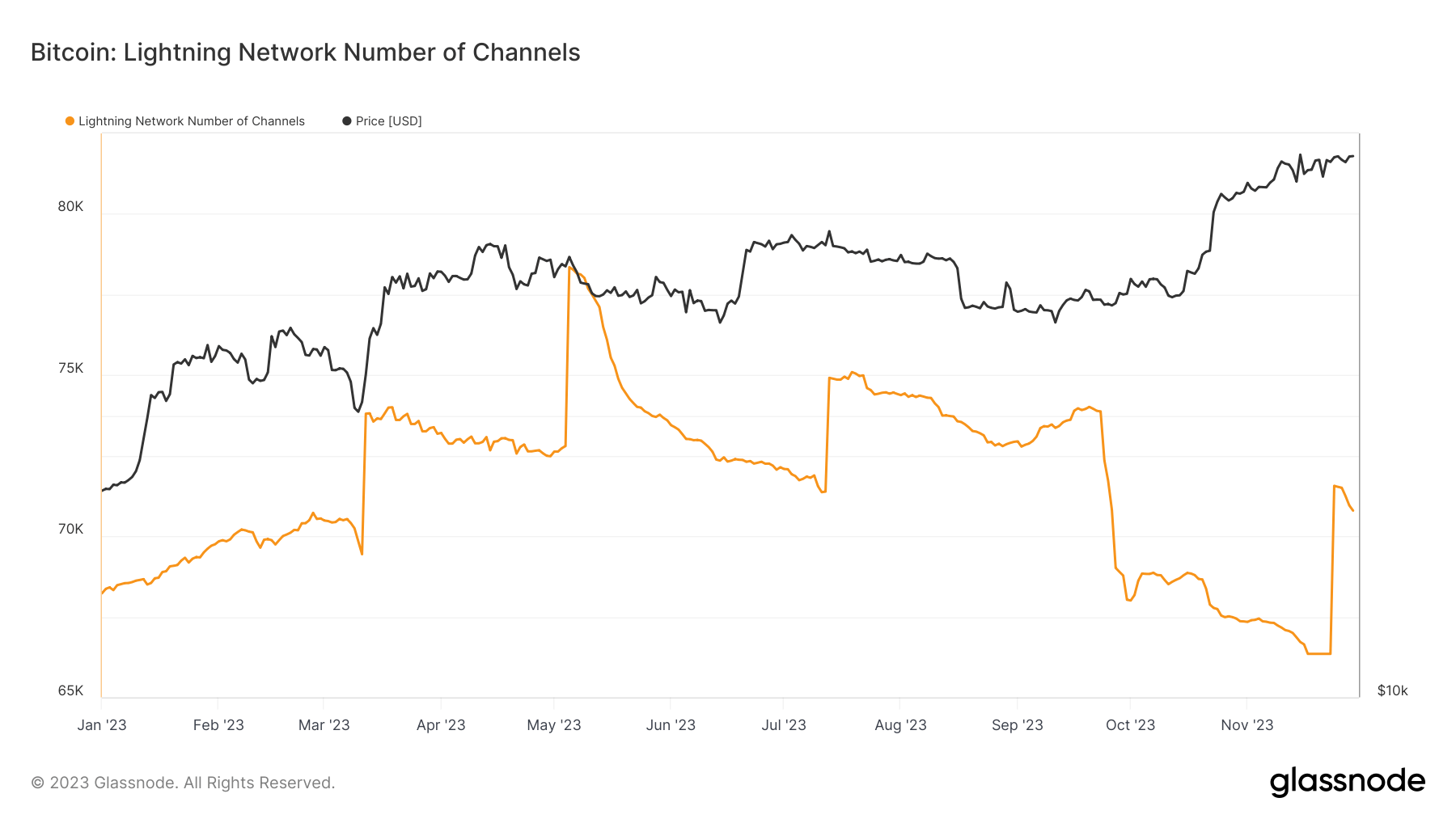The Bitcoin ecosystem continually evolves, adapting to the demands of a growing user base and the challenges of scalability. A critical component in this evolution is the Lightning Network, a layer-2 solution designed to facilitate faster and more efficient Bitcoin transactions. Understanding the dynamics of the Lightning Network provides insights into the broader health and direction of the Bitcoin market.
The Lightning Network is a payment protocol layered on the Bitcoin blockchain. It enables users to create channels through which Bitcoin can be sent and received more quickly and with lower fees than traditional blockchain transactions. Monitoring the network’s capacity (measured in BTC), the number of nodes, and the number of channels helps gauge its health and growth. These metrics are essential: capacity indicates the network’s ability to handle transactions, nodes represent the decentralization and robustness of the network, and channels reflect the network’s interconnectedness and transaction efficiency.
The Lightning Network has shown significant developments this year, especially notable between September and November. The network’s capacity, which initially dipped to 4,425.6 BTC in late September, rebounded sharply, reaching 5,508.2 BTC by late November. This increase suggests a growing trust and utility in the network’s capability to handle larger volumes of Bitcoin.
Simultaneously, the number of nodes — the individual points in the network running the Lightning software — also saw substantial growth. Starting the year with 15,670 nodes, there was a peak of 18,833 nodes by November, indicating a growing community engaged in the Lightning ecosystem. This expansion is critical for the network’s health, as increasing the number of nodes enhances its decentralization and resilience.

The number of channels, which are the actual paths through which transactions occur in the network, exhibited a remarkable surge. In just one day, from November 23 to 24, channels jumped from 66,349 to 71,562. This rapid increase suggests an expansion in the network’s capacity to facilitate transactions, pointing to a more efficient and robust infrastructure.

These spikes in the Lightning Network’s metrics have profound implications for the market. Firstly, the overall growth is a positive signal for investors, showing that the network is expanding and becoming more efficient and capable. This growth can increase investor confidence in Bitcoin’s scalability solutions, an essential factor for the cryptocurrency’s long-term viability.
Moreover, as the Lightning Network matures, it has the potential to drive Bitcoin’s adoption for everyday transactions. Its capability to enable faster and cheaper transactions makes Bitcoin more practical for regular use, addressing one of the primary criticisms of the cryptocurrency.
Finally, the development of Lightning Network indicates technological maturity within the blockchain space. The innovation and growth of such solutions could attract further interest and investment, not just in Bitcoin but in the broader blockchain ecosystem.
The significant increases in capacity, number of nodes, and channels observed in November present a bullish outlook for the Bitcoin market. These trends reflect a growing confidence in the Lightning Network as a scalable solution for Bitcoin transactions, hinting at a maturing market poised for further growth and adoption.
The post Bitcoin Lightning Network experiences capacity and channel surge appeared first on CryptoSlate.
